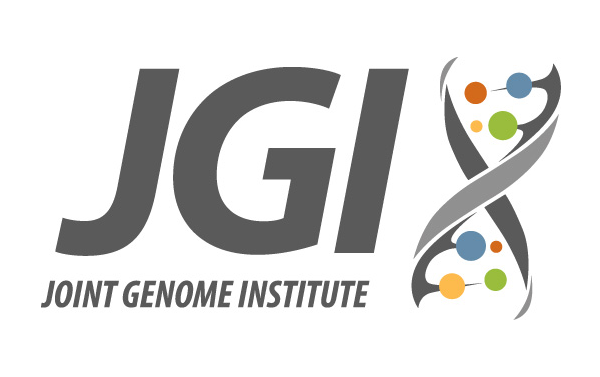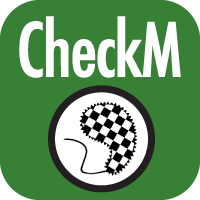The RAST algorithm was applied to annotating a genome sequence comprised of 212 contigs containing 1528443 nucleotides.
No initial gene calls were provided.
Standard features were called using: glimmer3; prodigal.
A scan was conducted for the following additional feature types: rRNA; tRNA; selenoproteins; pyrrolysoproteins; repeat regions; crispr.
The genome features were functionally annotated using the following algorithm(s): Kmers V2; Kmers V1; protein similarity.
In addition to the remaining original 0 coding features and 0 non-coding features, 1892 new features were called, of which 85 are non-coding.
Output genome has the following feature types:
Coding gene 1807
Non-coding repeat 48
Non-coding rna 37
Overall, the genes have 0 distinct functions.
The genes include 0 genes with a SEED annotation ontology across 0 distinct SEED functions.
The number of distinct functions can exceed the number of genes because some genes have multiple functions.
Bin.067.fasta_assembly succeeded!
The RAST algorithm was applied to annotating a genome sequence comprised of 156 contigs containing 1037457 nucleotides.
No initial gene calls were provided.
Standard features were called using: glimmer3; prodigal.
A scan was conducted for the following additional feature types: rRNA; tRNA; selenoproteins; pyrrolysoproteins; repeat regions; crispr.
The genome features were functionally annotated using the following algorithm(s): Kmers V2; Kmers V1; protein similarity.
In addition to the remaining original 0 coding features and 0 non-coding features, 1343 new features were called, of which 80 are non-coding.
Output genome has the following feature types:
Coding gene 1263
Non-coding repeat 61
Non-coding rna 19
Overall, the genes have 0 distinct functions.
The genes include 0 genes with a SEED annotation ontology across 0 distinct SEED functions.
The number of distinct functions can exceed the number of genes because some genes have multiple functions.
Bin.024.fasta_assembly succeeded!
The RAST algorithm was applied to annotating a genome sequence comprised of 558 contigs containing 2581959 nucleotides.
No initial gene calls were provided.
Standard features were called using: glimmer3; prodigal.
A scan was conducted for the following additional feature types: rRNA; tRNA; selenoproteins; pyrrolysoproteins; repeat regions; crispr.
The genome features were functionally annotated using the following algorithm(s): Kmers V2; Kmers V1; protein similarity.
In addition to the remaining original 0 coding features and 0 non-coding features, 3116 new features were called, of which 117 are non-coding.
Output genome has the following feature types:
Coding gene 2999
Non-coding repeat 88
Non-coding rna 29
Overall, the genes have 0 distinct functions.
The genes include 0 genes with a SEED annotation ontology across 0 distinct SEED functions.
The number of distinct functions can exceed the number of genes because some genes have multiple functions.
Bin.023.fasta_assembly succeeded!
The RAST algorithm was applied to annotating a genome sequence comprised of 158 contigs containing 3313400 nucleotides.
No initial gene calls were provided.
Standard features were called using: glimmer3; prodigal.
A scan was conducted for the following additional feature types: rRNA; tRNA; selenoproteins; pyrrolysoproteins; repeat regions; crispr.
The genome features were functionally annotated using the following algorithm(s): Kmers V2; Kmers V1; protein similarity.
In addition to the remaining original 0 coding features and 0 non-coding features, 3060 new features were called, of which 181 are non-coding.
Output genome has the following feature types:
Coding gene 2879
Non-coding repeat 134
Non-coding rna 47
Overall, the genes have 0 distinct functions.
The genes include 0 genes with a SEED annotation ontology across 0 distinct SEED functions.
The number of distinct functions can exceed the number of genes because some genes have multiple functions.
Bin.068.fasta_assembly succeeded!
The RAST algorithm was applied to annotating a genome sequence comprised of 108 contigs containing 3198161 nucleotides.
No initial gene calls were provided.
Standard features were called using: glimmer3; prodigal.
A scan was conducted for the following additional feature types: rRNA; tRNA; selenoproteins; pyrrolysoproteins; repeat regions; crispr.
The genome features were functionally annotated using the following algorithm(s): Kmers V2; Kmers V1; protein similarity.
In addition to the remaining original 0 coding features and 0 non-coding features, 2984 new features were called, of which 158 are non-coding.
Output genome has the following feature types:
Coding gene 2826
Non-coding repeat 107
Non-coding rna 51
Overall, the genes have 0 distinct functions.
The genes include 0 genes with a SEED annotation ontology across 0 distinct SEED functions.
The number of distinct functions can exceed the number of genes because some genes have multiple functions.
Bin.076.fasta_assembly succeeded!
The RAST algorithm was applied to annotating a genome sequence comprised of 126 contigs containing 1955535 nucleotides.
No initial gene calls were provided.
Standard features were called using: glimmer3; prodigal.
A scan was conducted for the following additional feature types: rRNA; tRNA; selenoproteins; pyrrolysoproteins; repeat regions; crispr.
The genome features were functionally annotated using the following algorithm(s): Kmers V2; Kmers V1; protein similarity.
In addition to the remaining original 0 coding features and 0 non-coding features, 2572 new features were called, of which 132 are non-coding.
Output genome has the following feature types:
Coding gene 2440
Non-coding repeat 90
Non-coding rna 42
Overall, the genes have 0 distinct functions.
The genes include 0 genes with a SEED annotation ontology across 0 distinct SEED functions.
The number of distinct functions can exceed the number of genes because some genes have multiple functions.
Bin.084.fasta_assembly succeeded!
The RAST algorithm was applied to annotating a genome sequence comprised of 366 contigs containing 3933461 nucleotides.
No initial gene calls were provided.
Standard features were called using: glimmer3; prodigal.
A scan was conducted for the following additional feature types: rRNA; tRNA; selenoproteins; pyrrolysoproteins; repeat regions; crispr.
The genome features were functionally annotated using the following algorithm(s): Kmers V2; Kmers V1; protein similarity.
In addition to the remaining original 0 coding features and 0 non-coding features, 3888 new features were called, of which 101 are non-coding.
Output genome has the following feature types:
Coding gene 3787
Non-coding repeat 61
Non-coding rna 40
Overall, the genes have 0 distinct functions.
The genes include 0 genes with a SEED annotation ontology across 0 distinct SEED functions.
The number of distinct functions can exceed the number of genes because some genes have multiple functions.
Bin.077.fasta_assembly succeeded!
The RAST algorithm was applied to annotating a genome sequence comprised of 405 contigs containing 2834732 nucleotides.
No initial gene calls were provided.
Standard features were called using: glimmer3; prodigal.
A scan was conducted for the following additional feature types: rRNA; tRNA; selenoproteins; pyrrolysoproteins; repeat regions; crispr.
The genome features were functionally annotated using the following algorithm(s): Kmers V2; Kmers V1; protein similarity.
In addition to the remaining original 0 coding features and 0 non-coding features, 3363 new features were called, of which 108 are non-coding.
Output genome has the following feature types:
Coding gene 3255
Non-coding repeat 70
Non-coding rna 38
Overall, the genes have 0 distinct functions.
The genes include 0 genes with a SEED annotation ontology across 0 distinct SEED functions.
The number of distinct functions can exceed the number of genes because some genes have multiple functions.
Bin.057.fasta_assembly succeeded!
The RAST algorithm was applied to annotating a genome sequence comprised of 78 contigs containing 3405059 nucleotides.
No initial gene calls were provided.
Standard features were called using: glimmer3; prodigal.
A scan was conducted for the following additional feature types: rRNA; tRNA; selenoproteins; pyrrolysoproteins; repeat regions; crispr.
The genome features were functionally annotated using the following algorithm(s): Kmers V2; Kmers V1; protein similarity.
In addition to the remaining original 0 coding features and 0 non-coding features, 3386 new features were called, of which 81 are non-coding.
Output genome has the following feature types:
Coding gene 3305
Non-coding repeat 38
Non-coding rna 43
Overall, the genes have 0 distinct functions.
The genes include 0 genes with a SEED annotation ontology across 0 distinct SEED functions.
The number of distinct functions can exceed the number of genes because some genes have multiple functions.
Bin.019.fasta_assembly succeeded!
The RAST algorithm was applied to annotating a genome sequence comprised of 133 contigs containing 1778664 nucleotides.
No initial gene calls were provided.
Standard features were called using: glimmer3; prodigal.
A scan was conducted for the following additional feature types: rRNA; tRNA; selenoproteins; pyrrolysoproteins; repeat regions; crispr.
The genome features were functionally annotated using the following algorithm(s): Kmers V2; Kmers V1; protein similarity.
In addition to the remaining original 0 coding features and 0 non-coding features, 2387 new features were called, of which 152 are non-coding.
Output genome has the following feature types:
Coding gene 2235
Non-coding repeat 112
Non-coding rna 40
Overall, the genes have 0 distinct functions.
The genes include 0 genes with a SEED annotation ontology across 0 distinct SEED functions.
The number of distinct functions can exceed the number of genes because some genes have multiple functions.
Bin.046.fasta_assembly succeeded!
The RAST algorithm was applied to annotating a genome sequence comprised of 664 contigs containing 3391019 nucleotides.
No initial gene calls were provided.
Standard features were called using: glimmer3; prodigal.
A scan was conducted for the following additional feature types: rRNA; tRNA; selenoproteins; pyrrolysoproteins; repeat regions; crispr.
The genome features were functionally annotated using the following algorithm(s): Kmers V2; Kmers V1; protein similarity.
In addition to the remaining original 0 coding features and 0 non-coding features, 4528 new features were called, of which 213 are non-coding.
Output genome has the following feature types:
Coding gene 4315
Non-coding repeat 192
Non-coding rna 21
Overall, the genes have 0 distinct functions.
The genes include 0 genes with a SEED annotation ontology across 0 distinct SEED functions.
The number of distinct functions can exceed the number of genes because some genes have multiple functions.
Bin.006.fasta_assembly succeeded!
The RAST algorithm was applied to annotating a genome sequence comprised of 874 contigs containing 4277591 nucleotides.
No initial gene calls were provided.
Standard features were called using: glimmer3; prodigal.
A scan was conducted for the following additional feature types: rRNA; tRNA; selenoproteins; pyrrolysoproteins; repeat regions; crispr.
The genome features were functionally annotated using the following algorithm(s): Kmers V2; Kmers V1; protein similarity.
In addition to the remaining original 0 coding features and 0 non-coding features, 4668 new features were called, of which 71 are non-coding.
Output genome has the following feature types:
Coding gene 4597
Non-coding repeat 51
Non-coding rna 20
Overall, the genes have 0 distinct functions.
The genes include 0 genes with a SEED annotation ontology across 0 distinct SEED functions.
The number of distinct functions can exceed the number of genes because some genes have multiple functions.
Bin.047.fasta_assembly succeeded!
The RAST algorithm was applied to annotating a genome sequence comprised of 541 contigs containing 2617763 nucleotides.
No initial gene calls were provided.
Standard features were called using: glimmer3; prodigal.
A scan was conducted for the following additional feature types: rRNA; tRNA; selenoproteins; pyrrolysoproteins; repeat regions; crispr.
The genome features were functionally annotated using the following algorithm(s): Kmers V2; Kmers V1; protein similarity.
In addition to the remaining original 0 coding features and 0 non-coding features, 3313 new features were called, of which 280 are non-coding.
Output genome has the following feature types:
Coding gene 3033
Non-coding repeat 263
Non-coding rna 17
Overall, the genes have 0 distinct functions.
The genes include 0 genes with a SEED annotation ontology across 0 distinct SEED functions.
The number of distinct functions can exceed the number of genes because some genes have multiple functions.
Bin.079.fasta_assembly succeeded!
The RAST algorithm was applied to annotating a genome sequence comprised of 144 contigs containing 2341866 nucleotides.
No initial gene calls were provided.
Standard features were called using: glimmer3; prodigal.
A scan was conducted for the following additional feature types: rRNA; tRNA; selenoproteins; pyrrolysoproteins; repeat regions; crispr.
The genome features were functionally annotated using the following algorithm(s): Kmers V2; Kmers V1; protein similarity.
In addition to the remaining original 0 coding features and 0 non-coding features, 2176 new features were called, of which 52 are non-coding.
Output genome has the following feature types:
Coding gene 2124
Non-coding repeat 31
Non-coding rna 21
Overall, the genes have 0 distinct functions.
The genes include 0 genes with a SEED annotation ontology across 0 distinct SEED functions.
The number of distinct functions can exceed the number of genes because some genes have multiple functions.
Bin.013.fasta_assembly succeeded!
The RAST algorithm was applied to annotating a genome sequence comprised of 357 contigs containing 4669444 nucleotides.
No initial gene calls were provided.
Standard features were called using: glimmer3; prodigal.
A scan was conducted for the following additional feature types: rRNA; tRNA; selenoproteins; pyrrolysoproteins; repeat regions; crispr.
The genome features were functionally annotated using the following algorithm(s): Kmers V2; Kmers V1; protein similarity.
In addition to the remaining original 0 coding features and 0 non-coding features, 5078 new features were called, of which 322 are non-coding.
Output genome has the following feature types:
Coding gene 4756
Non-coding repeat 285
Non-coding rna 37
Overall, the genes have 0 distinct functions.
The genes include 0 genes with a SEED annotation ontology across 0 distinct SEED functions.
The number of distinct functions can exceed the number of genes because some genes have multiple functions.
Bin.069.fasta_assembly succeeded!
The RAST algorithm was applied to annotating a genome sequence comprised of 216 contigs containing 1653379 nucleotides.
No initial gene calls were provided.
Standard features were called using: glimmer3; prodigal.
A scan was conducted for the following additional feature types: rRNA; tRNA; selenoproteins; pyrrolysoproteins; repeat regions; crispr.
The genome features were functionally annotated using the following algorithm(s): Kmers V2; Kmers V1; protein similarity.
In addition to the remaining original 0 coding features and 0 non-coding features, 1992 new features were called, of which 188 are non-coding.
Output genome has the following feature types:
Coding gene 1804
Non-coding repeat 152
Non-coding rna 36
Overall, the genes have 0 distinct functions.
The genes include 0 genes with a SEED annotation ontology across 0 distinct SEED functions.
The number of distinct functions can exceed the number of genes because some genes have multiple functions.
Bin.035.fasta_assembly succeeded!
The RAST algorithm was applied to annotating a genome sequence comprised of 671 contigs containing 4243538 nucleotides.
No initial gene calls were provided.
Standard features were called using: glimmer3; prodigal.
A scan was conducted for the following additional feature types: rRNA; tRNA; selenoproteins; pyrrolysoproteins; repeat regions; crispr.
The genome features were functionally annotated using the following algorithm(s): Kmers V2; Kmers V1; protein similarity.
In addition to the remaining original 0 coding features and 0 non-coding features, 5875 new features were called, of which 623 are non-coding.
Output genome has the following feature types:
Coding gene 5252
Non-coding repeat 592
Non-coding rna 31
Overall, the genes have 0 distinct functions.
The genes include 0 genes with a SEED annotation ontology across 0 distinct SEED functions.
The number of distinct functions can exceed the number of genes because some genes have multiple functions.
Bin.089.fasta_assembly succeeded!
The RAST algorithm was applied to annotating a genome sequence comprised of 219 contigs containing 3351861 nucleotides.
No initial gene calls were provided.
Standard features were called using: glimmer3; prodigal.
A scan was conducted for the following additional feature types: rRNA; tRNA; selenoproteins; pyrrolysoproteins; repeat regions; crispr.
The genome features were functionally annotated using the following algorithm(s): Kmers V2; Kmers V1; protein similarity.
In addition to the remaining original 0 coding features and 0 non-coding features, 4000 new features were called, of which 291 are non-coding.
Output genome has the following feature types:
Coding gene 3709
Non-coding repeat 250
Non-coding rna 41
Overall, the genes have 0 distinct functions.
The genes include 0 genes with a SEED annotation ontology across 0 distinct SEED functions.
The number of distinct functions can exceed the number of genes because some genes have multiple functions.
Bin.095.fasta_assembly succeeded!
The RAST algorithm was applied to annotating a genome sequence comprised of 406 contigs containing 4748972 nucleotides.
No initial gene calls were provided.
Standard features were called using: glimmer3; prodigal.
A scan was conducted for the following additional feature types: rRNA; tRNA; selenoproteins; pyrrolysoproteins; repeat regions; crispr.
The genome features were functionally annotated using the following algorithm(s): Kmers V2; Kmers V1; protein similarity.
In addition to the remaining original 0 coding features and 0 non-coding features, 4951 new features were called, of which 231 are non-coding.
Output genome has the following feature types:
Coding gene 4720
Non-coding repeat 191
Non-coding rna 40
Overall, the genes have 0 distinct functions.
The genes include 0 genes with a SEED annotation ontology across 0 distinct SEED functions.
The number of distinct functions can exceed the number of genes because some genes have multiple functions.
Bin.040.fasta_assembly succeeded!
The RAST algorithm was applied to annotating a genome sequence comprised of 567 contigs containing 2817950 nucleotides.
No initial gene calls were provided.
Standard features were called using: glimmer3; prodigal.
A scan was conducted for the following additional feature types: rRNA; tRNA; selenoproteins; pyrrolysoproteins; repeat regions; crispr.
The genome features were functionally annotated using the following algorithm(s): Kmers V2; Kmers V1; protein similarity.
In addition to the remaining original 0 coding features and 0 non-coding features, 3154 new features were called, of which 60 are non-coding.
Output genome has the following feature types:
Coding gene 3094
Non-coding repeat 23
Non-coding rna 37
Overall, the genes have 0 distinct functions.
The genes include 0 genes with a SEED annotation ontology across 0 distinct SEED functions.
The number of distinct functions can exceed the number of genes because some genes have multiple functions.
Bin.015.fasta_assembly succeeded!
The RAST algorithm was applied to annotating a genome sequence comprised of 643 contigs containing 2773501 nucleotides.
No initial gene calls were provided.
Standard features were called using: glimmer3; prodigal.
A scan was conducted for the following additional feature types: rRNA; tRNA; selenoproteins; pyrrolysoproteins; repeat regions; crispr.
The genome features were functionally annotated using the following algorithm(s): Kmers V2; Kmers V1; protein similarity.
In addition to the remaining original 0 coding features and 0 non-coding features, 3030 new features were called, of which 51 are non-coding.
Output genome has the following feature types:
Coding gene 2979
Non-coding repeat 29
Non-coding rna 22
Overall, the genes have 0 distinct functions.
The genes include 0 genes with a SEED annotation ontology across 0 distinct SEED functions.
The number of distinct functions can exceed the number of genes because some genes have multiple functions.
Bin.073.fasta_assembly succeeded!
The RAST algorithm was applied to annotating a genome sequence comprised of 548 contigs containing 2838860 nucleotides.
No initial gene calls were provided.
Standard features were called using: glimmer3; prodigal.
A scan was conducted for the following additional feature types: rRNA; tRNA; selenoproteins; pyrrolysoproteins; repeat regions; crispr.
The genome features were functionally annotated using the following algorithm(s): Kmers V2; Kmers V1; protein similarity.
In addition to the remaining original 0 coding features and 0 non-coding features, 3199 new features were called, of which 128 are non-coding.
Output genome has the following feature types:
Coding gene 3071
Non-coding repeat 98
Non-coding rna 30
Overall, the genes have 0 distinct functions.
The genes include 0 genes with a SEED annotation ontology across 0 distinct SEED functions.
The number of distinct functions can exceed the number of genes because some genes have multiple functions.
Bin.020.fasta_assembly succeeded!
The RAST algorithm was applied to annotating a genome sequence comprised of 326 contigs containing 3262289 nucleotides.
No initial gene calls were provided.
Standard features were called using: glimmer3; prodigal.
A scan was conducted for the following additional feature types: rRNA; tRNA; selenoproteins; pyrrolysoproteins; repeat regions; crispr.
The genome features were functionally annotated using the following algorithm(s): Kmers V2; Kmers V1; protein similarity.
In addition to the remaining original 0 coding features and 0 non-coding features, 3690 new features were called, of which 132 are non-coding.
Output genome has the following feature types:
Coding gene 3558
Non-coding repeat 103
Non-coding rna 29
Overall, the genes have 0 distinct functions.
The genes include 0 genes with a SEED annotation ontology across 0 distinct SEED functions.
The number of distinct functions can exceed the number of genes because some genes have multiple functions.
Bin.074.fasta_assembly succeeded!
The RAST algorithm was applied to annotating a genome sequence comprised of 459 contigs containing 3963132 nucleotides.
No initial gene calls were provided.
Standard features were called using: glimmer3; prodigal.
A scan was conducted for the following additional feature types: rRNA; tRNA; selenoproteins; pyrrolysoproteins; repeat regions; crispr.
The genome features were functionally annotated using the following algorithm(s): Kmers V2; Kmers V1; protein similarity.
In addition to the remaining original 0 coding features and 0 non-coding features, 4602 new features were called, of which 224 are non-coding.
Output genome has the following feature types:
Coding gene 4378
Non-coding repeat 185
Non-coding rna 39
Overall, the genes have 0 distinct functions.
The genes include 0 genes with a SEED annotation ontology across 0 distinct SEED functions.
The number of distinct functions can exceed the number of genes because some genes have multiple functions.
Bin.063.fasta_assembly succeeded!
The RAST algorithm was applied to annotating a genome sequence comprised of 502 contigs containing 3562135 nucleotides.
No initial gene calls were provided.
Standard features were called using: glimmer3; prodigal.
A scan was conducted for the following additional feature types: rRNA; tRNA; selenoproteins; pyrrolysoproteins; repeat regions; crispr.
The genome features were functionally annotated using the following algorithm(s): Kmers V2; Kmers V1; protein similarity.
In addition to the remaining original 0 coding features and 0 non-coding features, 3853 new features were called, of which 76 are non-coding.
Output genome has the following feature types:
Coding gene 3777
Non-coding repeat 49
Non-coding rna 27
Overall, the genes have 0 distinct functions.
The genes include 0 genes with a SEED annotation ontology across 0 distinct SEED functions.
The number of distinct functions can exceed the number of genes because some genes have multiple functions.
Bin.083.fasta_assembly succeeded!
The RAST algorithm was applied to annotating a genome sequence comprised of 351 contigs containing 2781677 nucleotides.
No initial gene calls were provided.
Standard features were called using: glimmer3; prodigal.
A scan was conducted for the following additional feature types: rRNA; tRNA; selenoproteins; pyrrolysoproteins; repeat regions; crispr.
The genome features were functionally annotated using the following algorithm(s): Kmers V2; Kmers V1; protein similarity.
In addition to the remaining original 0 coding features and 0 non-coding features, 3071 new features were called, of which 175 are non-coding.
Output genome has the following feature types:
Coding gene 2896
Non-coding repeat 134
Non-coding rna 41
Overall, the genes have 0 distinct functions.
The genes include 0 genes with a SEED annotation ontology across 0 distinct SEED functions.
The number of distinct functions can exceed the number of genes because some genes have multiple functions.
Bin.082.fasta_assembly succeeded!
The RAST algorithm was applied to annotating a genome sequence comprised of 381 contigs containing 2372894 nucleotides.
No initial gene calls were provided.
Standard features were called using: glimmer3; prodigal.
A scan was conducted for the following additional feature types: rRNA; tRNA; selenoproteins; pyrrolysoproteins; repeat regions; crispr.
The genome features were functionally annotated using the following algorithm(s): Kmers V2; Kmers V1; protein similarity.
In addition to the remaining original 0 coding features and 0 non-coding features, 2776 new features were called, of which 192 are non-coding.
Output genome has the following feature types:
Coding gene 2584
Non-coding repeat 166
Non-coding rna 26
Overall, the genes have 0 distinct functions.
The genes include 0 genes with a SEED annotation ontology across 0 distinct SEED functions.
The number of distinct functions can exceed the number of genes because some genes have multiple functions.
Bin.008.fasta_assembly succeeded!
The RAST algorithm was applied to annotating a genome sequence comprised of 334 contigs containing 2015743 nucleotides.
No initial gene calls were provided.
Standard features were called using: glimmer3; prodigal.
A scan was conducted for the following additional feature types: rRNA; tRNA; selenoproteins; pyrrolysoproteins; repeat regions; crispr.
The genome features were functionally annotated using the following algorithm(s): Kmers V2; Kmers V1; protein similarity.
In addition to the remaining original 0 coding features and 0 non-coding features, 2527 new features were called, of which 160 are non-coding.
Output genome has the following feature types:
Coding gene 2367
Non-coding repeat 138
Non-coding rna 22
Overall, the genes have 0 distinct functions.
The genes include 0 genes with a SEED annotation ontology across 0 distinct SEED functions.
The number of distinct functions can exceed the number of genes because some genes have multiple functions.
Bin.026.fasta_assembly succeeded!
The RAST algorithm was applied to annotating a genome sequence comprised of 240 contigs containing 1413175 nucleotides.
No initial gene calls were provided.
Standard features were called using: glimmer3; prodigal.
A scan was conducted for the following additional feature types: rRNA; tRNA; selenoproteins; pyrrolysoproteins; repeat regions; crispr.
The genome features were functionally annotated using the following algorithm(s): Kmers V2; Kmers V1; protein similarity.
In addition to the remaining original 0 coding features and 0 non-coding features, 1748 new features were called, of which 121 are non-coding.
Output genome has the following feature types:
Coding gene 1627
Non-coding repeat 98
Non-coding rna 23
Overall, the genes have 0 distinct functions.
The genes include 0 genes with a SEED annotation ontology across 0 distinct SEED functions.
The number of distinct functions can exceed the number of genes because some genes have multiple functions.
Bin.052.fasta_assembly succeeded!
The RAST algorithm was applied to annotating a genome sequence comprised of 413 contigs containing 2684829 nucleotides.
No initial gene calls were provided.
Standard features were called using: glimmer3; prodigal.
A scan was conducted for the following additional feature types: rRNA; tRNA; selenoproteins; pyrrolysoproteins; repeat regions; crispr.
The genome features were functionally annotated using the following algorithm(s): Kmers V2; Kmers V1; protein similarity.
In addition to the remaining original 0 coding features and 0 non-coding features, 3113 new features were called, of which 241 are non-coding.
Output genome has the following feature types:
Coding gene 2872
Non-coding repeat 211
Non-coding rna 30
Overall, the genes have 0 distinct functions.
The genes include 0 genes with a SEED annotation ontology across 0 distinct SEED functions.
The number of distinct functions can exceed the number of genes because some genes have multiple functions.
Bin.094.fasta_assembly succeeded!
The RAST algorithm was applied to annotating a genome sequence comprised of 84 contigs containing 2694299 nucleotides.
No initial gene calls were provided.
Standard features were called using: glimmer3; prodigal.
A scan was conducted for the following additional feature types: rRNA; tRNA; selenoproteins; pyrrolysoproteins; repeat regions; crispr.
The genome features were functionally annotated using the following algorithm(s): Kmers V2; Kmers V1; protein similarity.
In addition to the remaining original 0 coding features and 0 non-coding features, 2701 new features were called, of which 51 are non-coding.
Output genome has the following feature types:
Coding gene 2650
Non-coding repeat 38
Non-coding rna 13
Overall, the genes have 0 distinct functions.
The genes include 0 genes with a SEED annotation ontology across 0 distinct SEED functions.
The number of distinct functions can exceed the number of genes because some genes have multiple functions.
Bin.065.fasta_assembly succeeded!














